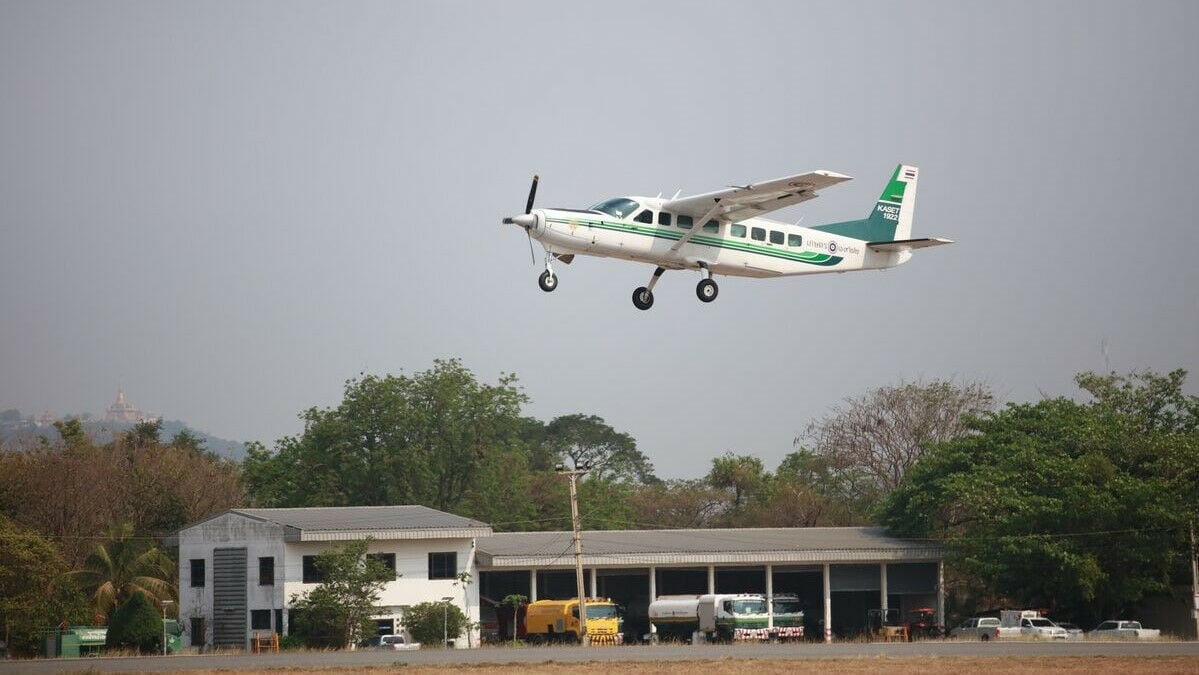Thai skies to sparkle: 30 aircraft to blitz pollution and sizzle summer heat

In a move to combat air pollution and beat back the scorching summer heat, Thailand is unleashing a squadron of 30 aircraft across the nation.
These aerial warriors aren’t armed with missiles but with the power to summon rain itself, in a bid to douse the flames of pollution and ease the parched lands.
Artificial rain, also known as cloud seeding, is induced by dispersing substances into clouds to encourage precipitation. The most common method involves dispersing silver iodide, potassium iodide, or other substances into the atmosphere, typically by aircraft or ground-based generators.
These substances act as nuclei around which water droplets can condense, ultimately leading to the formation of raindrops. Cloud seeding is typically used in areas experiencing drought or water scarcity to augment natural precipitation.
Kicking off its annual royal rainmaking programme yesterday, Thailand is sparing no effort to tackle its air pollution woes head-on. With seven strategic centres set up across all 77 provinces, this ambitious operation aims to induce artificial rain throughout March and April, as revealed by government reports cited by Bloomberg.
This year’s airborne assault features a formidable arsenal of 24 aircraft from the Royal Rainmaking Department, supplemented by six jets from the Royal Thai Air Force. It’s a show of force against climate change’s relentless grip on Thailand’s agricultural heartlands, as Agriculture Minister Thamanat Prompow asserts.
“Rainmaking isn’t just a necessity; it’s our frontline defence against the ravages of climate change.”
Pollution battle
The rain will not only soothe the scorched earth but also shield against hailstorms and forest infernos threatening the nation’s greenery.
But the battle against pollution is equally crucial.
“We’re not just fighting fire with water, we’re fighting smog with rain.”
By quenching the earth’s thirst, these operations aim to wash away the choking haze of PM2.5 pollution that has plagued Thai cities, restoring blue skies and healthy lungs.
Moreover, the downpour will serve as a lifeline for Thailand’s water reserves, replenishing reservoirs and dams critical for sustaining agriculture in the parched summer months. With the state weather forecaster predicting a blistering summer, where temperatures could soar to a scorching 44.5°C (112°F) in some regions, the need for water is more pressing than ever, reported The Business Standard.
Last year’s heatwave shattered records, with the mercury climbing past 50°C in some areas, driving electricity demands to unprecedented heights. The looming spectre of such extreme temperatures underscores the urgency of Thailand’s rainmaking efforts.
Cities like Bangkok and Chiang Mai, perennially plagued by poor air quality, will welcome this assault on pollution. With the dry season unleashing a toxic cocktail of agricultural burn-offs, forest fires, and vehicular emissions, the promise of rain brings hope for clearer skies and healthier communities.
Latest Thailand News
Follow The Thaiger on Google News:


























